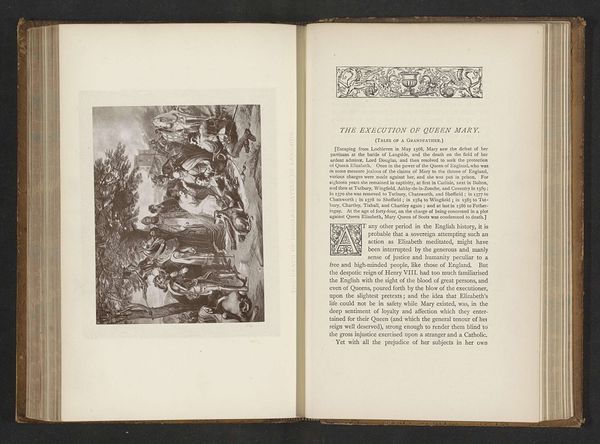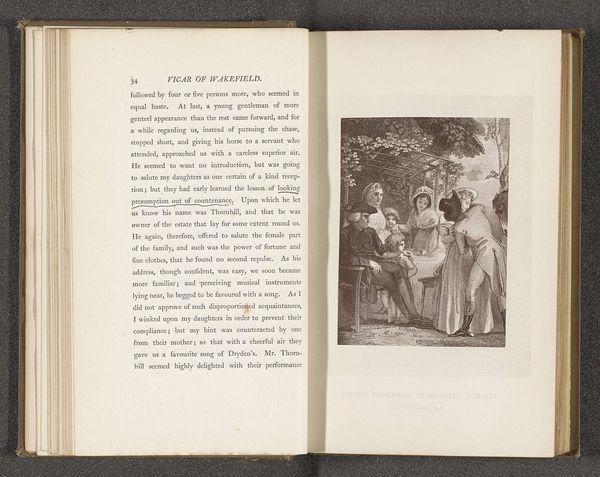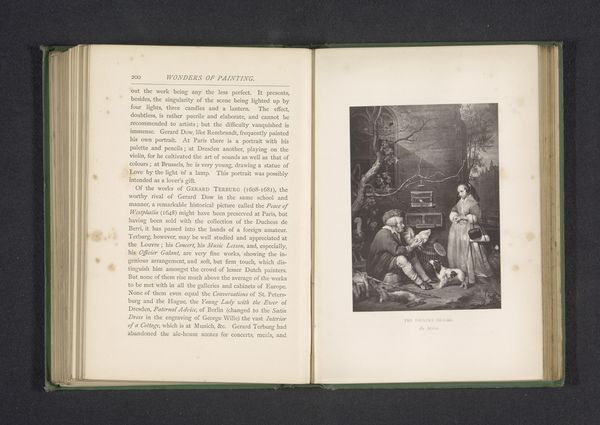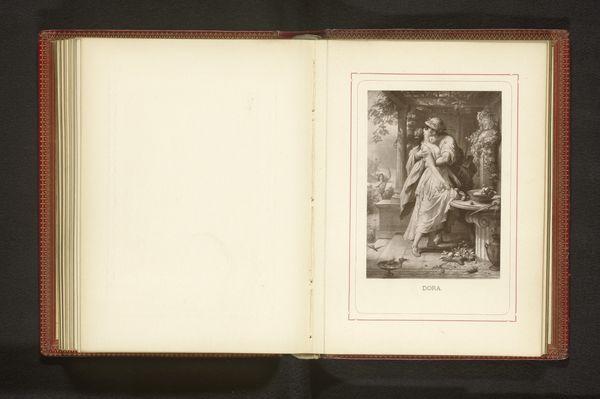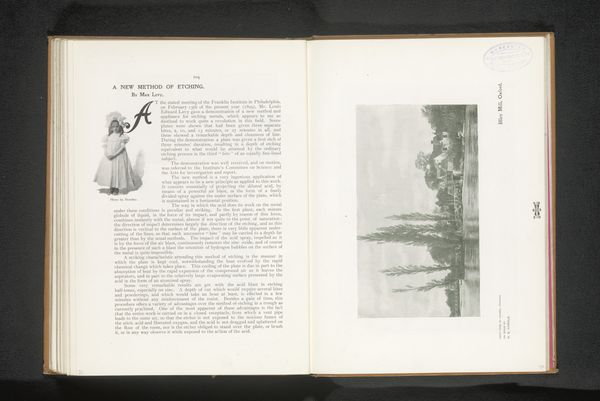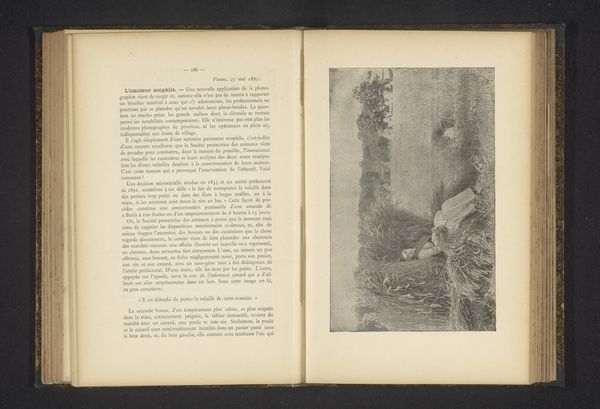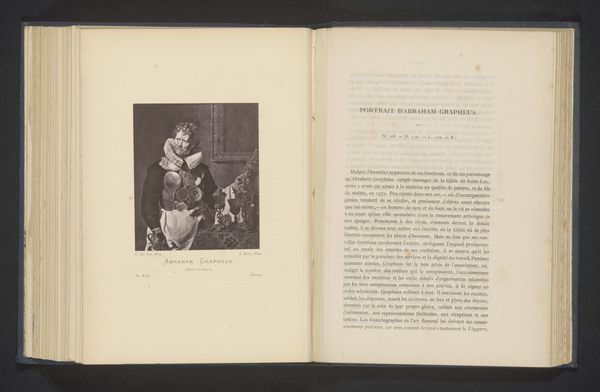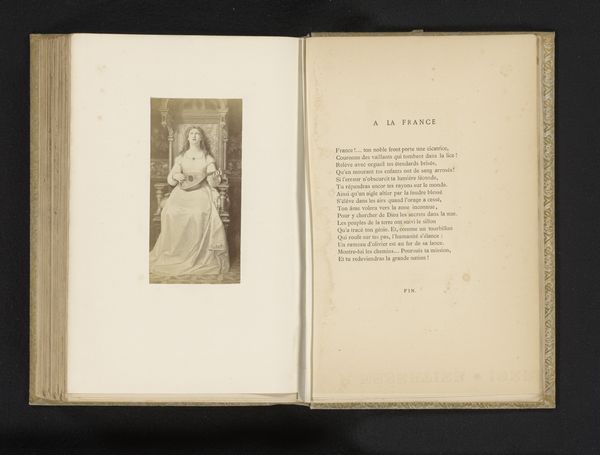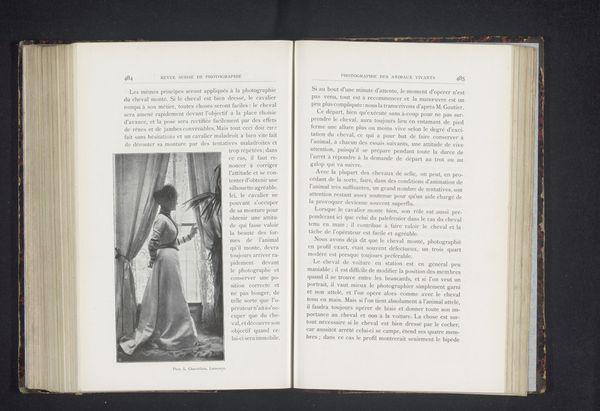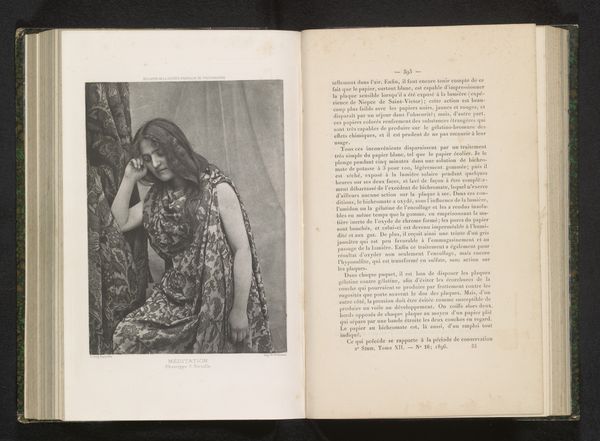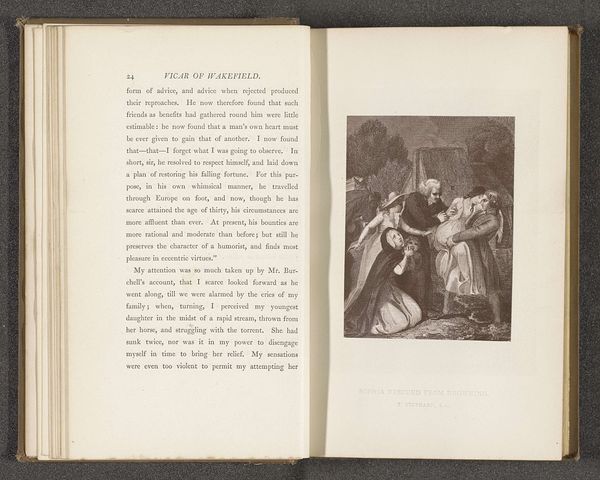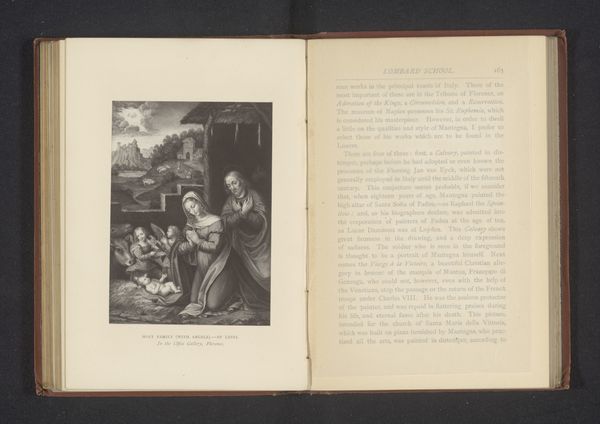
print, photography
#
portrait
# print
#
photography
#
genre-painting
Dimensions: height 177 mm, width 114 mm
Copyright: Rijks Museum: Open Domain
Editor: So, here we have an image of a print titled "Elizabeth Rivett," created before 1893, now housed in the Rijksmuseum. It's striking how this photographic print is embedded within the pages of a book. I'm immediately drawn to the stark contrast between the woman, prominently displayed in the portrait, and the textual context surrounding her. How would you interpret this juxtaposition? Curator: The photographic print existing within a book shifts our focus. It becomes crucial to examine the means of production - photography as a relatively new technology reproduced and disseminated via printed matter. What does it mean to contain an image like this in a book? Does the book’s text influence the image, or vice versa? Editor: That’s an interesting point. The book would facilitate the distribution of her portrait… making her, in effect, mass produced? Curator: Exactly. Considering this as genre-painting made for the consumption of a bourgeois public redirects our understanding. Think of the labor involved – from the photographer capturing the initial image to the printmakers, and binders who assembled the book. This raises questions about value, about the distinction between singular artwork and readily available reproduction. What sort of dialogue can emerge when art is enmeshed with textual matter? Editor: It reframes our understanding. Instead of a static art object, it becomes intertwined with distribution, labor, and ultimately, social consumption. Curator: Precisely. By understanding those mechanisms, we reveal a lot about the period, its priorities and practices around imaging and distribution. Editor: I now see it as more than a portrait. It embodies production, circulation, and the societal values of the time. Thanks! Curator: Agreed, seeing art as entangled with social structures unveils hidden dialogues that shift the ways we interpret artistic creation.
Comments
No comments
Be the first to comment and join the conversation on the ultimate creative platform.
